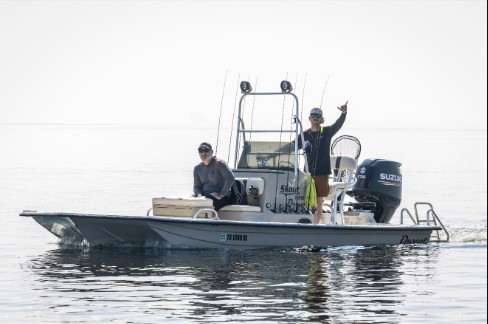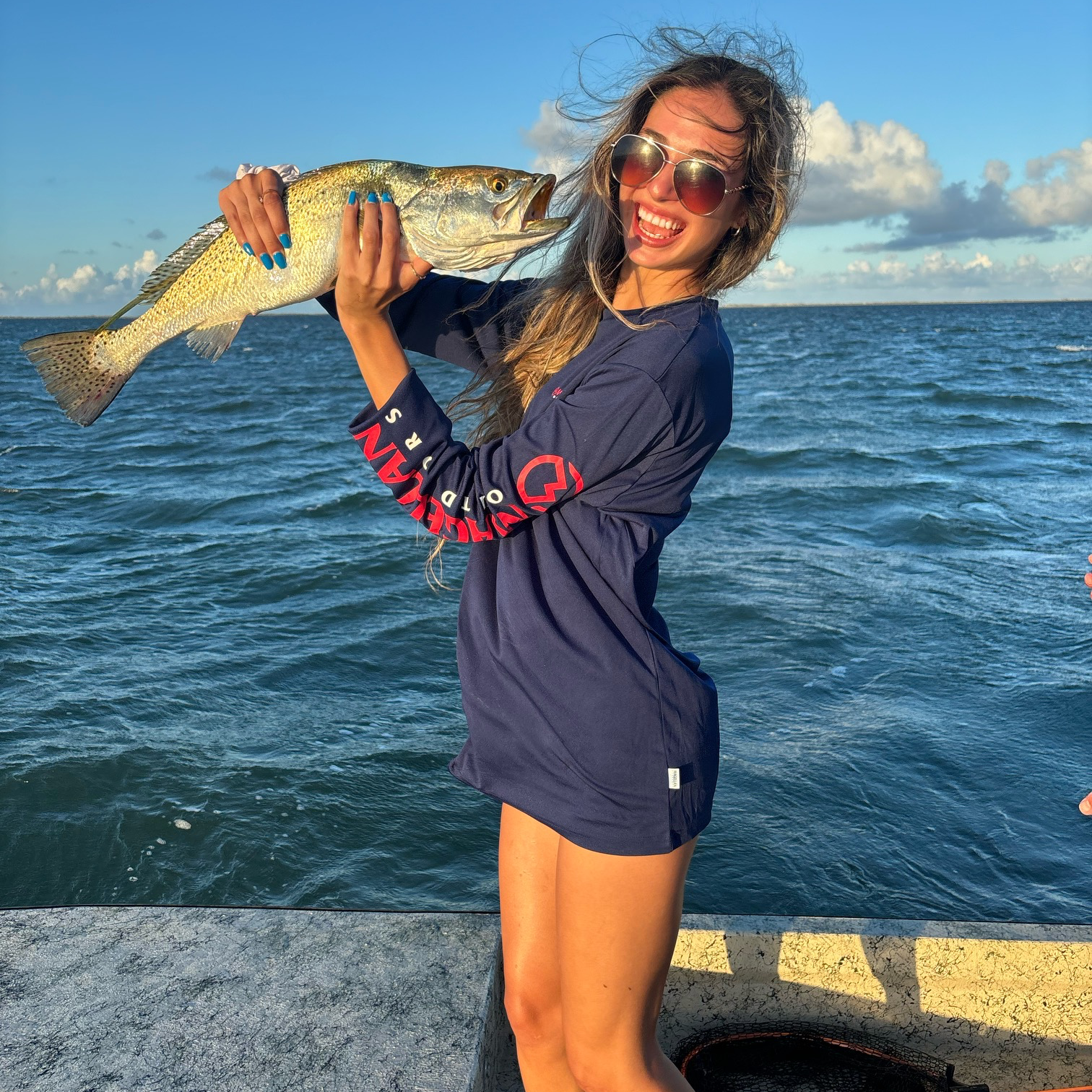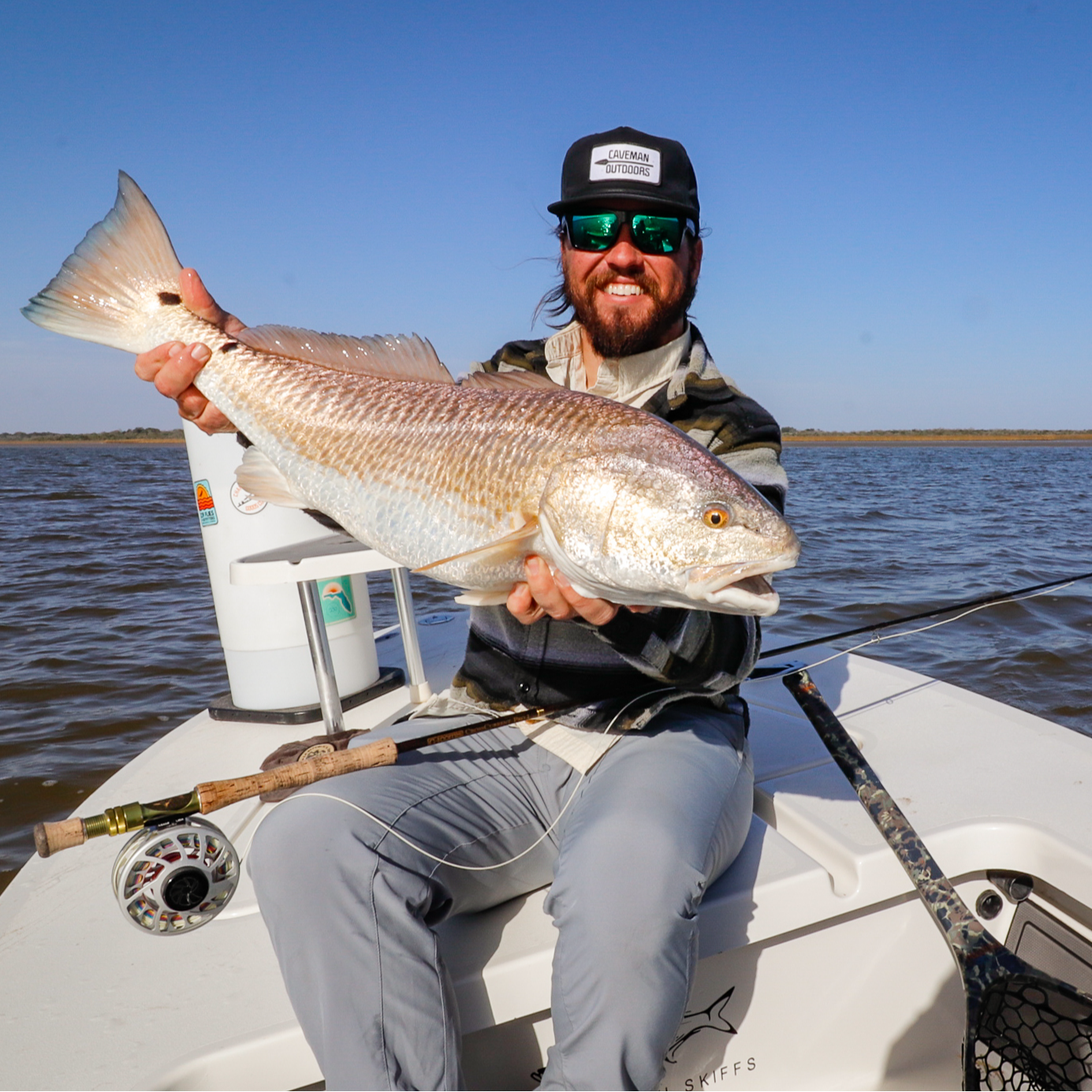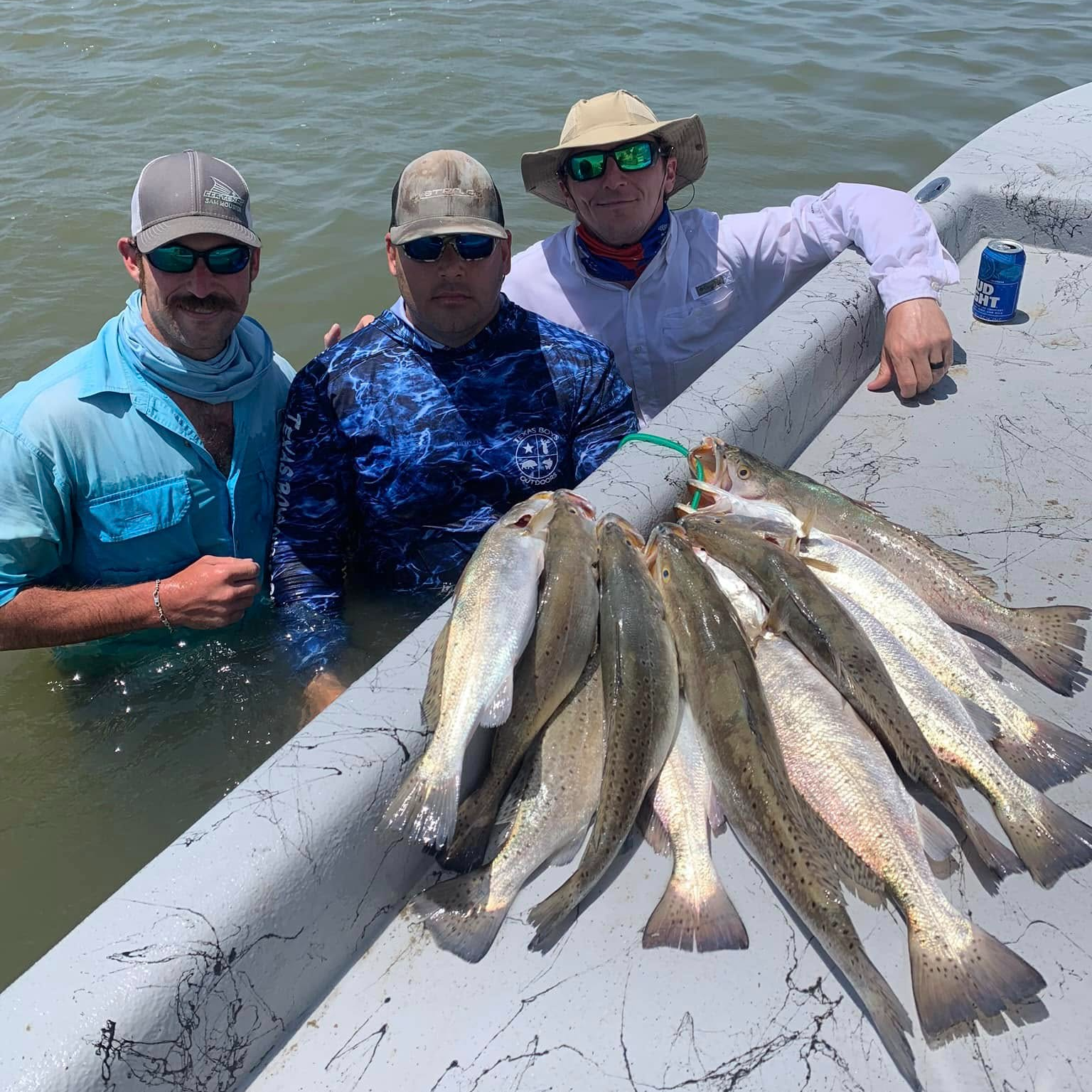Inshore, Jetty, Flats in Port Isabel
Private Bay Fishing Trip
Inshore, Flats Fishing in Port Aransas
Bay Adventure- 23' Haynie
Inshore, Flats Fishing in Port O'Connor
Bowfishing In Port O' Connor Texas
Inshore, Flats Fishing in Rockport
Bowfishing In Rockport Texas
Inshore, Flats Fishing in Port Aransas
Bowfishing In Port Aransas Texas
Inshore, Flats Fishing in South Padre Island
Redfish, Rockets, Trout & More!
Inshore, Jetty, Flats in Port Mansfield
Half Day Port Mansfield
Inshore, Flats Fishing in Aransas Pass
Fly-fishing/Sight-fishing
Texas Trio: Drift Or Wade Trips
Inshore Fishing in Port Mansfield
Inshore Fishing Trip
We started Captain Experiences to make it easy to book fishing and hunting guides around the world. With over 2,000 Damn Good Guides, our platform makes finding and booking a trip seamless. Head here to check out our trips.
What Makes Texas a Hotspot for Flounder?
Texas boasts a varied coastline that includes bays, estuaries, marshes, and inlets, each providing a distinct habitat for flounder and other marine species.
One key factor contributing to the abundance of flounder in Texas is the state's extensive network of bays and estuaries. These shallow, brackish waters serve as crucial nursery grounds for juvenile flounder, offering abundant food sources and protection from predators. As the season progresses, flounder migrate from these nursery areas to deeper waters, presenting anglers with ample opportunities for catching larger specimens.
Additionally, Texas's coastal marshes play a vital role in supporting healthy flounder populations. These marshes act as important feeding grounds for flounder, providing a rich supply of baitfish, shrimp, and other prey species. The nutrient-rich waters of the marshes contribute to the overall health and size of flounder, making them prime targets for anglers during the season.
Furthermore, the state's proximity to the Gulf of Mexico influences the size of flounder found in Texas waters. Flounder thrive in the warm, nutrient-rich waters of the Gulf, where they can grow to impressive sizes. Texas anglers often encounter trophy-sized flounder, thanks to the favorable conditions provided by the Gulf's ecosystem.

The Fall Flounder Run
The fall flounder run in Texas typically occurs from late September to early December, marking a period of heightened activity among flounder as they embark on their seasonal migration. This phenomenon is driven by various biological factors, including the flounder's natural spawning habits and environmental cues.
During the fall months, adult flounder begin their migration from the deeper waters of the Gulf of Mexico towards the shallower coastal areas, including bays, estuaries, and marshes along the Texas coast. This movement is triggered by changes in water temperature and daylight hours, signaling the onset of the spawning season.
Flounder are known to spawn in nearshore waters, where the conditions are favorable for egg fertilization and larval development. As a result, they congregate in large numbers along the Texas coast during the fall run, creating prime opportunities for anglers to target these prized fish.
When fishing during the fall flounder run, anglers should focus on areas with strong tidal currents, as these can concentrate flounder and increase feeding activity. Bays, channels, and marsh edges are productive locations to target flounder during this period. Look for structure such as oyster beds, rocks, and submerged vegetation, as flounder often seek cover and ambush prey near these features.
The Spring Flounder Migration
The spring flounder migration in Texas represents another significant period of movement and activity among flounder, albeit with distinct characteristics compared to the fall run. Unlike the fall migration, which is primarily driven by spawning behaviors, the spring migration is more focused on feeding and habitat preferences as flounder transition from their wintering areas to shallower coastal waters.
The timing of the spring flounder migration typically occurs from late February through May, although this can vary depending on local environmental conditions and water temperatures. As temperatures begin to rise and daylight hours increase, flounder become more active and start moving from their deeper wintering areas towards the shallower coastal flats, bays, and estuaries.
During the spring migration, flounder exhibit behaviors that reflect their feeding preferences and habitat selection. They actively seek out areas with abundant food sources, including shrimp, crabs, and baitfish, as they prepare for the upcoming spawning season. Flounder are opportunistic feeders, often lurking near structure and ambush points where they can ambush passing prey.

Texas Flounder Length and Bag Limits 2024
In Texas, regulations regarding the minimum length and bag limits for flounder fishing are set by the Texas Parks and Wildlife Department (TPWD). These regulations are designed to ensure the sustainability of flounder populations and maintain healthy fish stocks for future generations of anglers. It's crucial for anglers to adhere to these regulations to help conserve flounder populations and support sustainable fishing practices.
Minimum Flounder Length Limit in Texas: The minimum length limit for flounder in Texas is 15 inches for all anglers, regardless of fishing location or method.
Texas Flounder Bag Limit 2024: The bag limit for flounder in Texas is 5 fish per angler per day.
Texas Flounder Closed Season 2024
In recent years, the Texas Parks and Wildlife Department (TPWD) has implemented temporary closures related to flounder fishing during the month of November. These closures are part of the state's efforts to address declines in flounder populations and promote sustainable resource management practices.
The Texas flounder season will be closed from November 1 2024 - December 14 2024.
The primary reason behind the November closures is to reduce fishing pressure during the peak spawning period of flounder. During this time, flounder migrate from their offshore feeding grounds to nearshore areas to spawn, making them more vulnerable to harvest. By temporarily closing flounder fishing during November, TPWD aims to protect spawning adults and ensure the successful reproduction of flounder populations.
Conservation and resource management are at the forefront of these closures. Flounder populations in Texas have faced various challenges, including habitat loss, environmental changes, and overfishing. By implementing targeted closures during critical periods like the fall spawning season, TPWD seeks to mitigate these challenges and support the recovery of flounder populations.
Jake Lane
Updated on September 16, 2024

November 7, 2023

June 22, 2022

November 15, 2023

May 13, 2024

April 15, 2022
Related Articles
December 10, 2021
Featured Locations
- Fishing Charters Near Me
- Austin Fishing Guides
- Biloxi Fishing Charters
- Bradenton Fishing Charters
- Cabo San Lucas Fishing Charters
- Cancun Fishing Charters
- Cape Coral Fishing Charters
- Charleston Fishing Charters
- Clearwater Fishing Charters
- Corpus Christi Fishing Charters
- Crystal River Fishing Charters
- Dauphin Island Fishing Charters
- Daytona Beach Fishing Charters
- Destin Fishing Charters
- Fort Lauderdale Fishing Charters
- Fort Myers Fishing Charters
- Fort Walton Beach Fishing Charters
- Galveston Fishing Charters
- Gulf Shores Fishing Charters
- Hatteras Fishing Charters
- Hilton Head Fishing Charters
- Islamorada Fishing Charters
- Jacksonville Fishing Charters
- Jupiter Fishing Charters
- Key Largo Fishing Charters
- Key West Fishing Charters
- Kona Fishing Charters
- Lakeside Marblehead Fishing Charters
- Marathon Fishing Charters
- Marco Island Fishing Charters
- Miami Fishing Charters
- Montauk Fishing Charters
- Morehead City Fishing Charters
- Naples Fishing Charters
- New Orleans Fishing Charters
- New Smyrna Beach Fishing Charters
- Ocean City Fishing Charters
- Orange Beach Fishing Charters
- Panama City Beach Fishing Charters
- Pensacola Fishing Charters
- Pompano Beach Fishing Charters
- Port Aransas Fishing Charters
- Port Orange Fishing Charters
- Rockport Fishing Charters
- San Diego Fishing Charters
- San Juan Fishing Charters
- Sarasota Fishing Charters
- South Padre Island Fishing Charters
- St. Augustine Fishing Charters
- St. Petersburg Fishing Charters
- Tampa Fishing Charters
- Tarpon Springs Fishing Charters
- Venice Fishing Charters
- Virginia Beach Fishing Charters
- West Palm Beach Fishing Charters
- Wilmington Fishing Charters
- Wrightsville Beach Fishing Charters

































